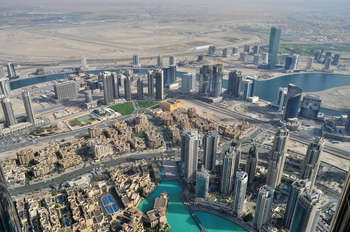Arab Development Portal - a tool to identify trade and business opportunities
A comprehensive platform to improve the scope, depth, reliability and availability of high-quality development knowledge of Arab region.

> Trade defence: measures against EU exports increase in third countries
> Trade - EU and Southern African Countries sign agreement
The Arab Development Portal (ADP) is an initiative of the Coordination Group of Arab, national and regional development institutions, the Islamic Development Bank and the OPEC Fund for International Development, in collaboration with the United Nations Development Programme (UNDP), aiming at enhancing the knowledge of people on development in the Arab region.
The Arab region includes the following Countries: Algeria, Bahrain, Comoros, Djibouti, Egypt, Iraq, Jordan, Kuwait, Lebanon, Libya, Mauritania, Morocco, Oman, Palestine, Qatar, Saudi Arabia, Somalia, Sudan, Syria, Tunisia, United Arab Emirates, Yemen.
ADP is a comprehensive, one-stop-shop knowledge resource that aims to improve the scope, depth, reliability and availability of high-quality development knowledge to support development progress in the Arab World. It is a bilingual – Arabic and English – online knowledge platform that includes a unique database, advanced tools for data browsing, extraction and visualization, and a rich pool of additional resources, covering eleven key development topics across all Arab countries. Currently, its database contains more than 2,000 indicators extracted from national statistical offices and international organizations. Its resource repository is home to over 1,000 publications.
The platform covers these main topics: banking and finance, demography, education, energy, gender, labor and employment, macroeconomy, poverty, private sector development, trade, water and food security.
> Trade - public consultation on EU-Turkey economic relations
Trade
At the crossroads of Africa, Asia and Europe, the Arab region has participated in some of the oldest trade routes in human history including Silk Road commerce linking Asia and Europe.
Arab countries’ total share of world exports has doubled since 2000, reaching 7% in 2013. When excluding fuel, the Arab region’s non-oil exports made up 2% of world exports in 2013 up from 1% in 2000. Trade openness ratio in the Arab region averaged 97 in 2013, but international trade to GDP ratio exhibits large variations ranging from 176 in United Arab Emirates to 19 in Sudan.
Trade in services in the Arab region averaged 14.5% of GDP in 2013 with Lebanon having the highest trade in services to GDP ratio of 62% in 2013. The region’s main trade partners are the EU, US and Asia although intraregional trade is rising.
In addition to intraregional agreements (such as Pan Arab Free Trade Agreement, Agadir agreement, Gulf Cooperation Council and Arab Maghreb Union), 13 Arab Countries are members of the World Trade Organization (WTO) and 7 Countries are observers and several Arab countries have signed trade agreements with the European Union, the United States, the European Free Trade Association (EFTA), Turkey, the Common Market for Eastern and Southern Africa (COMESA), the Southern Common Market (MERCOSUR) and others.
While Arab Countries’ trade policies reflect elements of protectionism as well as trade liberalization and export promotion, many challenges impede the Arab countries’ capacity to reap the full benefits of their potential. These include relatively low economic diversification, weak governance structure and poor trade-related infrastructure in some Countries.
The Arab region is outstandingly rich in oil and gas and the relatively low level of economic diversification leads to a persistent dependence on these commodities for growth. Fuel exports, representing the vast majority of exports in the oil producing countries, amounted to 82% of the region’s merchandise. The majority of imports in the Arab countries are manufactures imports. Except for the oil-exporting countries, the external balance on goods and services remain relatively low or negative in the Arab countries.
The Arab region has an average performance on the logistics performance World Bank indices of quality of trade-related infrastructure and efficiency of customs clearance process; with the United Arab Emirates (UAE) scoring the best logistics performance.
In order to boost trade across borders and enhance the enabling environment, many Arab governments have tried to implement custom reforms and modernize their trade logistics infrastructure despite the fact that trade costs remain high according to the World average Logistics Performance Index (LPI). New policies and regulations put in action in Countries such as the UAE, Qatar and Tunisia, have been remarkable in terms of the efficiency of customs clearance process, and in the UAE, Qatar and Saudi Arabia, in terms of quality of trade and transport-related infrastructure, as the LPI shows. Challenges remain however in the quality of “soft” infrastructure such as customs facilitation and administrative procedures.
Photocredit: Good Free Photos




